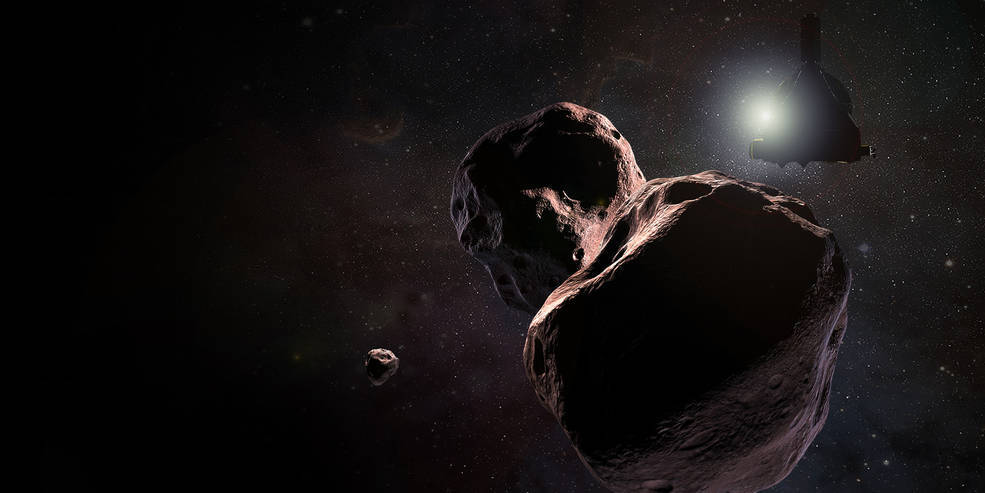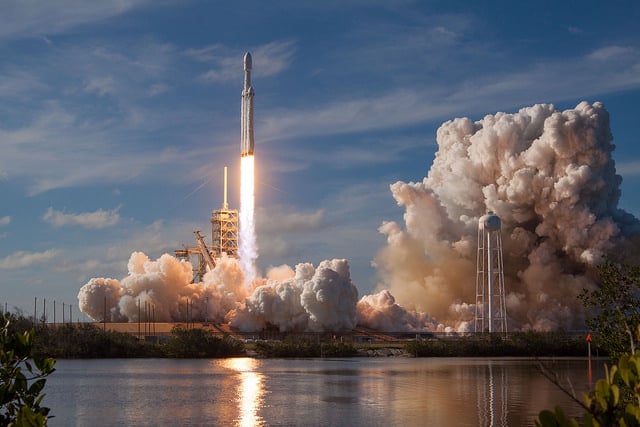
According to a statement made by the US Air Force, the reentry of the Tiangong-1 was confirmed over the Pacific Ocean on April 2nd.
Continue reading

Continue reading

According to the ESA's Space Debris Office, about 100 tonnes of space debris enters our atmosphere every year on average.
Continue reading

Continue reading

A team of international astronomers recently discovered a Super Earth with a similar composition of Mercury, and is several times hotter!
Continue reading

Using data from the Hubble Space Telescope and other ground-based observatories, a team of astronomers have found a galaxy that appears to have no dark matter.
Continue reading

According to updates by Tabetha Boyajian and her team, it appears that Tabby's Star recently experienced another major dip in brightness.
Continue reading

All across the world, space agencies and satellite trackers are predicting that China's Tiangong-1 space station will enter Earth's atmosphere around April Fool's Day.
Continue reading

Skywatchers have a busy weekend ahead. The Chinese space station is expected to burn up in the atmosphere, the Moon is full and Mars and Saturn meet at dawn.
Continue reading

Continue reading

Scientists are getting better at predicting colorful auroras here on Earth by closely watching the behavior of the Sun.
Continue reading

After being assessed by the Standing Review Board, NASA has announced that the launch of the James Webb Space Telescope's will be delayed until 2020.
Continue reading

The Curiosity rover recently passed another major milestone. Since it landed in 2012, it has spent a total of 2000 Martian days (sols) exploring the Red Planet!
Continue reading

Continue reading

In response to the news of the Facebook data breach, SpaceX and Tesla founder Elon Musk has chosen to delete his companies official accounts
Continue reading

According to a new study by an international team of scientists, oxygen was introduced rather rapidly to Earth's atmosphere over 2 billion years ago
Continue reading

Continue reading

Join NASA's most daring mission to the Sun by sending your name along for the ride on the Parker Solar Probe that's set to launch this summer.
Continue reading

According to a new study by a team of Canadian astronomers, the interstellar asteroid 'Oumuamua likely came from a binary star system
Continue reading

As part of their goal to conduct a crewed mission to the Moon, China is busy developing the Long March 9 - a heavy rocket as powerful as the Saturn V
Continue reading

According to a new study by a team from UC Berkeley, the existence of oceans on Mars may have had to do a lot with early volcanic activity
Continue reading

70,000 years ago, Scholz's Star visited our neighbourhood, and changed the trajectories of hundreds of objects in out Solar System.
Continue reading

The team behind Illustris have now released the first results of their IllustrisTNG simulation, the most accurate simulation of the Universe to date.
Continue reading

Continue reading

A new study has cast doubt on whether or not the TRAPPIST-1 system could be habitable, indicating that it has too much water to support life
Continue reading

Continue reading

Continue reading

Earlier this month, scientists using the Parkes Radio Telescope detected three FRBs, one of which was the brightest ever observed
Continue reading

The first Kuiper Belt Object that the New Horizons mission will investigate - MU69 - just received the nickname "Ultima Thule"
Continue reading

The Kepler mission, which is responsible for the majority of exoplanet discoveries, is running out of fuel and will be making its final discoveries over the next few months.
Continue reading

According to a recent interview Musk made at the 2018 SXSW conference, the BFR will be ready to conduct test launches in the next two years
Continue reading

A team that participated in the ESA's Pangaea-X program recently produced the largest 3D image of a cave system in Spain, and the technology could be used to map out lava tubes on the Moon and Mars too
Continue reading
Continue reading

According to a new study that included the Frank Drake, any alien signals humanity detects will have likely come from a civilization that has since gone extinct
Continue reading

Continue reading

Stephen Hawking passed away on Wednesday morning, March 14th, at his home in Cambridge. He leaves behind a loving family, millions of admirers, and an unparalleled scientific legacy.
Continue reading

The NASA Twin Study, which assessed how spending a year aboard the ISS affected Scott Kelly's health (compared to his twin brother, Mark), has just been released
Continue reading

In honor of the successful launch of the Falcon Heavy, SpaceX has released an inspiring video of the event that shows the highlights of the event
Continue reading

The James Webb Space Telescope just entered the final phase of integration and testing before being shipped off to French Guiana, where it will launch in 2019
Continue reading

NASA's HAMMER (Hyper-velocity Asteroid Mitigation Mission for Emergency Response) is a plan to protect us from asteroids, either with kinetic impactors, or with NUKES.
Continue reading

Continue reading

Located between 2610 and 2930 light years from Earth is the King Cobra Cluster (aka. Messier 67), one of the oldest open star clusters
Continue reading

A new study conducted with the support of the NASA Astrobiology Institute has theorized that life may exist on the undersides of Europa's icy surface.
Continue reading

Continue reading

Three new studies have been released based on Juno data that have revealed new things about Jupiter's atmospheric bands and interior.
Continue reading

For the first time, team of ESA scientists recently developed and tested an air-breathing electric thruster, which could open the way for an entirely new class of satellite
Continue reading

Each of Jupiter's poles is a beautiful, geometric arrangement of Earth-sized cyclones. In the north, 8 storms surround one central storm, while on the south, 5 storms surround one in the center.
Continue reading

According to a new report from the Government Accountability Office, the launch of the James Webb Space Telescope is likely to be delayed again, and exceed its cost cap.
Continue reading

The Hubble has detected a massive dust cloud 150 billion miles across around the young star HR 4796A.
Continue reading

A team of astronomers recently discovered a system of three exoplanets that are just 100 light years from Earth, making them ideal for future studies
Continue reading

 Universe Today
Universe Today












































